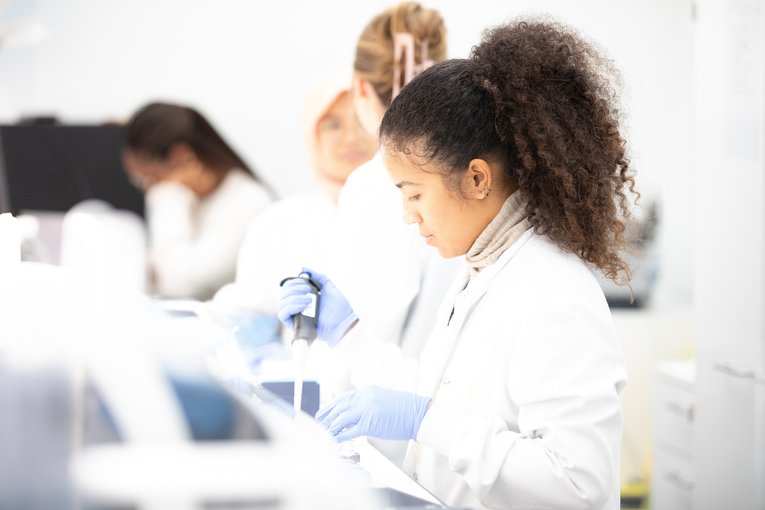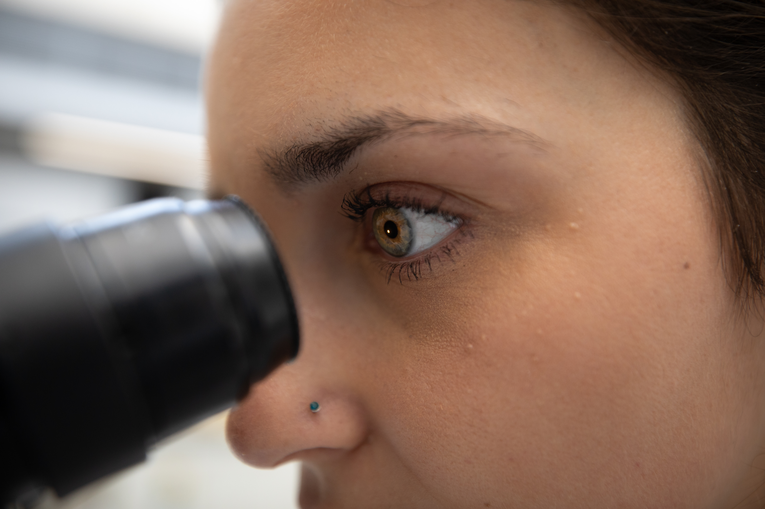
https://www.gosh.nhs.uk/our-research/our-research-infrastructure/nihr-great-ormond-street-hospital-brc/brc-news/marking-rare-disease-day-gosh-dna-keyrings-and-family-trees/
Marking Rare Disease Day at GOSH: DNA keyrings and family trees
4 Mar 2020, 1:28 p.m.
For this year's Rare Disease Day on 29th February, we invited children and young people at GOSH to make their own DNA keyring, map out their family tree, learn more about the genetics of rare diseases and even get a 'rare' new look.The day is an important annual reminder to raise awareness of rare diseases, which affect one in 17 of us during our lifetime. While each rare disease affects less than one in 2,000 people, collectively they have a huge impact. Taken together, the number of people directly affected by rare diseases is equivalent to the population of the world’s third largest country.
Patients and families passing through the hospital's Lagoon cafe stopped by to take part in fun activities. We even had some repeat visitors!

We were delighted to see GOSH patient Graycie and her family for the second year in a row
More than 70% of rare diseases are genetic, and most start in childhood. One of our popular activities this year was creating a personalised keyring, with each bead representing a characteristic linked to a particular gene, such as eye colour. We also mapped out family trees, thinking about how characteristics are passed down between generations.

We talked to visitors about the GOSH Sample Bank, an initiative to use leftover patient samples for child health research, instead of throwing them away. We won’t be asking patients to donate anything extra or do any extra tests, and the samples will allow us to carry out even more cutting-edge research, helping us better understand rare conditions and develop the treatments of the future.
Understanding how rare diseases affect families is vital to inform child health research at GOSH and around the world. We can only be sure we're tackling the most important issues by speaking to families who know how these conditions affect their daily lives. Some of our young patients shared their thoughts on Rare Disease Day:
- “It’s hard having JDM (juvenile dermatomyositis), but at least I get to miss school!” Graycie, age 7
- "When I come here I am brave and strong.” Paige, age 6, who along with her twin sister is fundraising for GOSH Charity.
- “I hope that in the future there are more treatments for more conditions." Emma, age 13.

Thanks to everyone who visited us and took part in Rare Disease Day 2020! Why not read Stanley's story or find out more about genetics and rare diseases.
Rare disease research at GOSH is underpinned by the NIHR Great Ormond Street Hospital (GOSH) Biomedical Research Centre.

NIHR launches £13.7m investment into brain tumour research
The National Institute for Health and Care Research (NIHR) has announced a £13.7 million investment that will support ground-breaking research to develop novel brain tumour treatments in the UK.

New consortium aims to help improve care for arthritis patients
A new UK-led research group, including Great Ormond Street Hospital and University College London, aims to improve the lives of children, young people and adults with arthritis by defining for the first time what being in ‘remission’ from arthritis truly

Update for patients and families on industrial action - December 2025
As you may be aware, some of our Resident Doctors will be taking part in planned industrial action from 7am on Wednesday 17 December to 7am on Monday 22 December.


